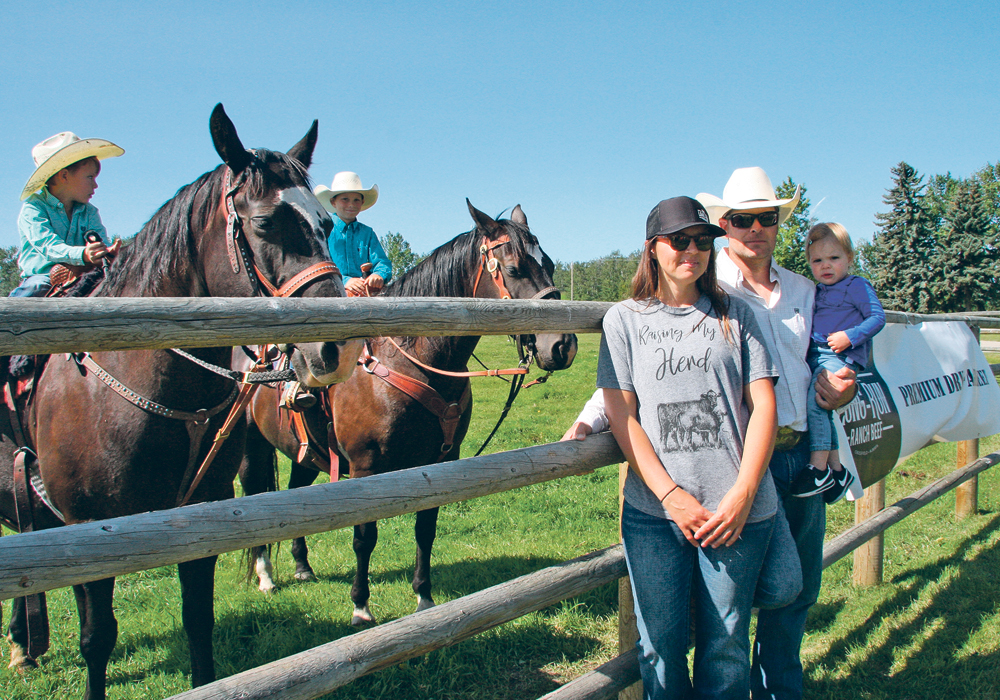Long Run Ranch Beef sets brisk pace with online and farmers market sales as it keeps up with demand for local product
CROSSFIELD, Alta. — Kevin and Amy Taks are ranchers for modern times.
Based at Crossfield, north of Calgary, the family-run operation began direct-marketing beef and found the demand was so high for local, dry-aged product, they had to build an on-farm freezer to supply their customers year round.
“The more we talked to consumers there seemed to be a shift in the way people thought about how their food was raised and who raised it. They wanted local product,” said Kevin.
Two years ago they started selling online and at a local farmers market.
Read Also

Pork sector targets sustainability
Manitoba Pork has a new guiding document, entitled Building a Sustainable Future, outlining its sustainability goals for the years to come.
“It is a challenge, but it is a fun challenge,” said Amy.
The beef operation is part of a larger mixed farm with Kevin’s family.
Kevin and Amy manage the beef side and about 10 percent of what they raise is direct marketed. They are active on Facebook and Instagram promoting life on the ranch with their three young children, Harlan, Decker and Ellis.
They have about 350 primarily Red Angus with some Simmental influence. They finish the cattle for Long Run Ranch Beef at home first on pasture and then a short silage and grain feeding period of 60 to 80 days until they reach about 1,400 pounds. Cattle that do not go through the direct market are sold via an online auction to feedlots.
The cattle are processed in February or March and all the beef is frozen and marketed throughout the year.
The abattoir does not grade the meat but the staff is experienced with assessing quality.
“We tell them if anything isn’t a AAA or Prime we just wouldn’t use it. Because of our genetics we use on the cattle, they are full Angus type cattle, we haven’t run into an issue with carcass traits. They have all been satisfactory,” Kevin said.
They explain to customers the cattle are pasture raised but grain finished and because demand is so strong, customers appear happy with that explanation.
Amy handles delivery and drops off orders in Airdrie every Friday. For them, service is the key. While some families will buy quarters or halves, the biggest part of the business is smaller packages. They can put together custom orders and if customers want it, soup bones, ox tails and organ meats are available.
















